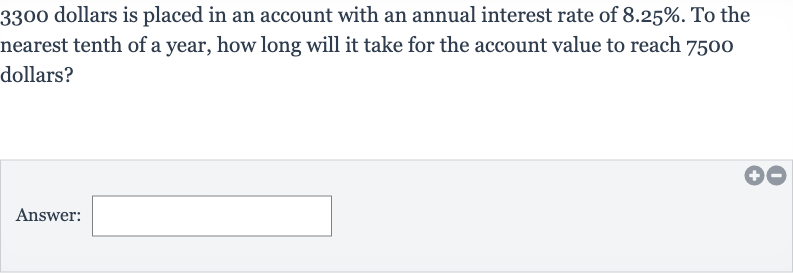Full solution
Q. dollars is placed in an account with an annual interest rate of . To the nearest tenth of a year, how long will it take for the account value to reach dollars?Answer:
- Determine type of interest: Determine the type of interest being applied.Since the problem does not specify compound or simple interest, we will assume compound interest is applied annually.
- Identify compound interest formula: Identify the formula for compound interest.The formula for compound interest is , where: = the amount of money accumulated after years, including interest. = the principal amount (the initial amount of money). = the annual interest rate (decimal). = the number of times that interest is compounded per year. = the time the money is invested for, in years.
- Convert interest rate to decimal: Convert the annual interest rate from a percentage to a decimal. as a decimal is .
- Set up equation and solve: Since the interest is compounded annually, will be .
- Simplify equation and solve: Set up the equation with the given values and solve for .
- Take natural logarithm: Simplify the equation and solve for .
- Calculate natural logarithm: Take the natural logarithm of both sides to solve for .
- Round answer: Calculate the natural logarithm of both sides.
- Round answer: Calculate the natural logarithm of both sides.Round the answer to the nearest tenth of a year. years
More problems from Exponential growth and decay: word problems
QuestionGet tutor help
QuestionGet tutor help
QuestionGet tutor help
QuestionGet tutor help
QuestionGet tutor help
QuestionGet tutor help
QuestionGet tutor help
QuestionGet tutor help
QuestionGet tutor help

